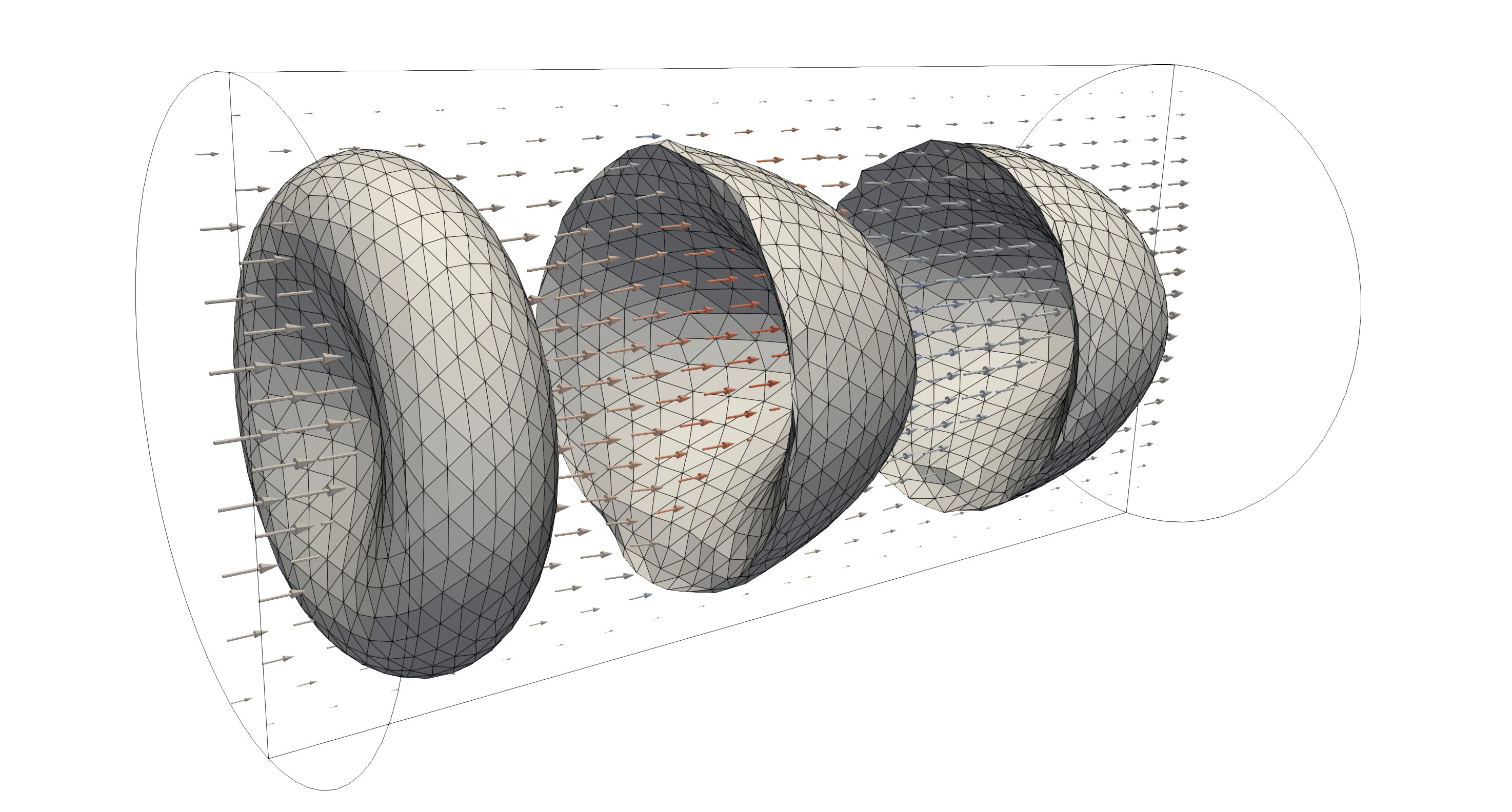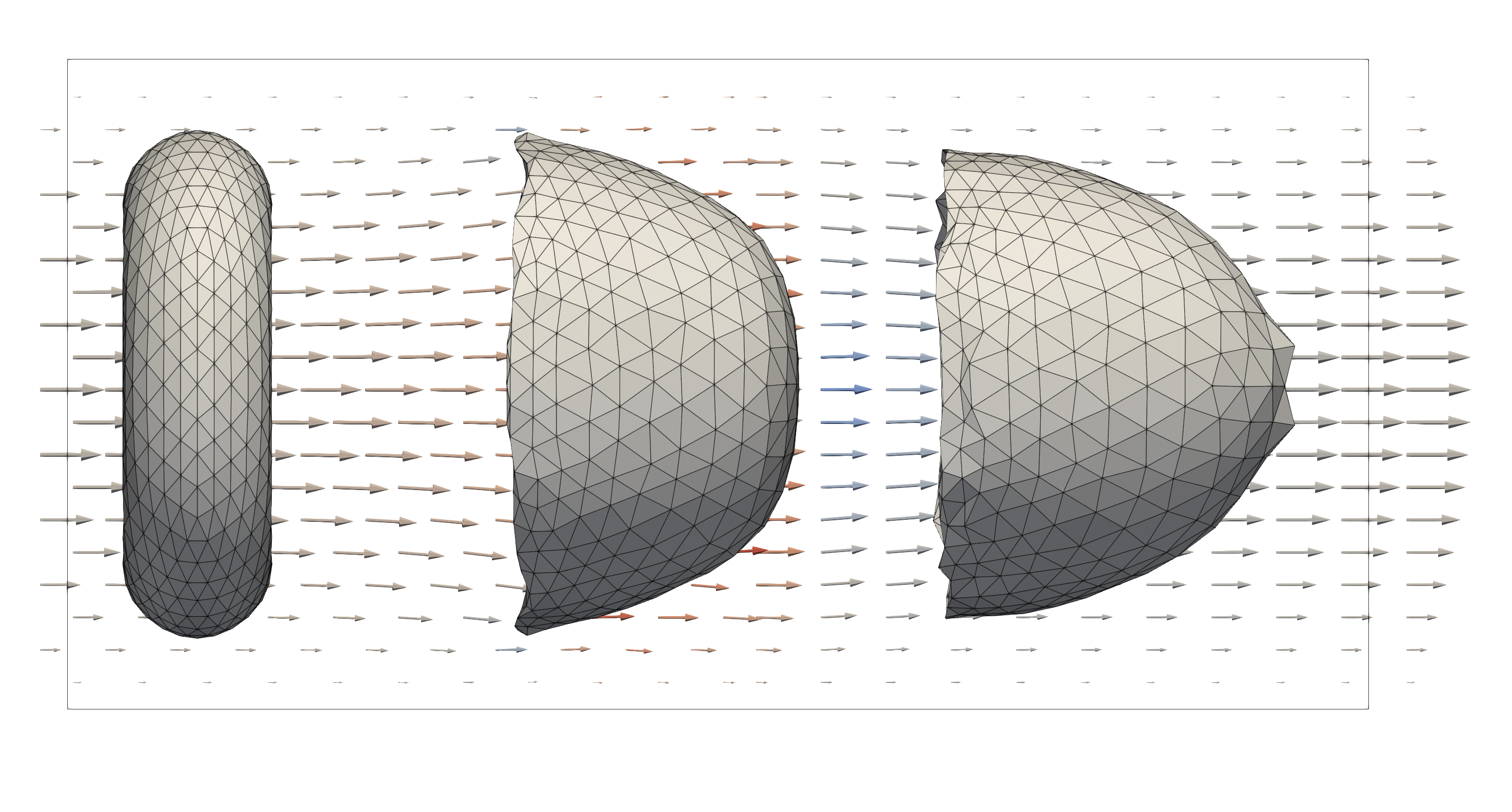A parachuting cell¶
The example in examples/parachuting presents a example cases where a single
red blood cell (RBC) is flowing, or “parachuting”, through a narrow pipe. The
domain is obtained by voxelisation of a surface mesh of a tube given in STL
format (tube.stl). After discretising the domain, the boundary conditions
are applied to mimic an endless pipe flow by prescribing periodic conditions at
either end. The flow is driven by an external force to achieve the desired,
equivalent Poiseuille flow through the pipe. So, although only a small section
of pipe is modelled, the RBC is flowing through an endless pipe.
After compilation, the example can be run using single core, or multiple cores, as:
# run the simulation from the `examples/parachuting` direc
mpirun -n 1 ./parachuting config.xml
# generate Paraview compatible output files
../../scripts/batchPostProcess.sh
The output files are generated in tmp/, where the flow field and particle
fields can be visualised separately by viewing the tmp/Fluid.*.xmf and
tmp/RBC.*.xmf files in Paraview.
The RBC will be transported and deformed due to the available flow profile in the pipe. This results in the typical deformation profile of the RBC within the pipe flow, giving rise to the “parachuting” name.

Three different stages of the RBC embedded in the pipe flow. The left-most figure shows the initial condition of the RBC, where the right-most illustrates the final steady-state configuration of the RBC after the initial deformations in the Poiseuille flow. The glyphs illustrate the velocity field corresponding to the middle snapshot of the RBC.¶

A side view of the previous figure illustrating more clearly the crosssectional profile of the RBC at the three different stages. Again the glyphs illustrate the velocity field corresponding to the middle configuration of the RBC.¶
Configuration¶
The problem can be configured by changing values in the config.xml file, for
instance to change the number of output iterations by <sim><tmeas>, the
Reynolds number <domain><Re>, or the discretisation size of the domain
<domain><refDirN>.
